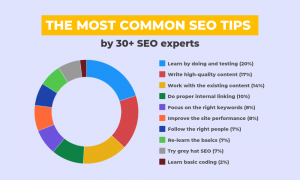What is SEO Friendly Blog Post in URL: 10 Tips for Writing

Writing SEO Friendly blog posts requires integrity, as with all writing. To keep your reader interested, write appealing articles.
If people like an article and appreciate it, they would be much more likely to share it with others. So, if you want to improve your rankings, improve your writing skills.
Over-using keywords severely hamper the readability of your text, which you don’t want to do.
The words you want to be found for should be in a prominent place. In fact, a high key phrase density can negatively affect your rankings.
Do keyword research – Before you Start:
Before you start writing, you have to do keyword research. Find out what words the audience is really looking for. These are the subjects that you should write about and the keywords in your text that you should use.
If you’ve done your research on keywords and have a list of keywords to write about, it’s time to write.
Here are 10 SEO Friendly Tips for ending up with an excellent blog post.

Writing Tips for SEO Friendly Blog Posts:
Many bloggers tend to write whatever comes into their heads when starting a new blog post. This may work for some people who have natural writing talents, others may need some help.
10 tips for an amazing and SEO-friendly blog post:
Writing blog posts requires expertise. So, improve your writing skills if you want to improve your rankings.
Mind starts with these tips on how to write a blog post that is SEO Friendly!
In this SEO Friendly Blog Post, I’ll talk to you about the 10 steps that you need to take to get your SEO plan up and running.
Before you Begin: Do Research for Keywords:
If you want to dominate the results of the search, you will have to find out for which phrases your audience actually searches.
Although this may work for certain individuals with natural writing abilities, others may require some assistance. 10 tips for an amazing and SEO Friendly Blog Post.

1. Think before you write a Post
Think carefully about the message of your piece before starting.
- What do you want to tell your readers or which key question do you want to answer?
- What’s the intention of your article?
- Think at the end of the page, what do you want your readers to do?
Before you begin, write down the responses to the above three questions and think about the search purpose that someone might have.
By looking at the search results for the search word you want to rank with, one simple way to get an insight into this is.
2. Create a clear structure.
This means that every post should have:
- An introduction of some sort (in which you present your subject);
- A body (in which you write the key message);
- A conclusion, a conclusion (in which you summarize the main ideas or draw a conclusion).
In all three parts above, write down what you want to say. It’ll help you create an SEO Friendly Blog Post that is organized and readable. Real writing can now begin.
3. Use paragraphs and headings:
Ask yourself what each paragraph’s main concept is. Don’t start on a new line with each new sentence, just because it looks cool. Also, as each paragraph should have its own idea or topic, try not to make them too long.
Proper headings also assist the readers to understand what a particular part of your text is about.
Use subheadings to direct them if you want people to navigate their way through your posts, help them search your website, and explain the layout of your articles.
They’re not only necessary for readability, but also for SEO. In any heading, using the keyword would make the text clunky and unnatural. This will further put individuals off reading.
4. Use Transition Words for SEO friendly:
Transition words allow people to search and understand the relationship between sentences and paragraphs via your text.
Let’s assume, for example, that there are three reasons for individuals to purchase your product. You should use signal terms such as “first of all,” “secondly,” and “finally.” Also, words such as ‘however’,’ similarly’, and ‘for instance’ give your readers a strong signal.
In this way, readers will immediately understand that words like ‘to sum up’ will fit a conclusion.
5. Use Related Keywords:
Stuffing your article with the keyword of your focus makes it less enticing to read, but your rankings can also be harmed. Google is getting smarter and needs you to write content that would be liked by users.
By identifying synonyms and other keywords similar to your focus key term, one of the ways Google understands the subject of your text is.
6. Optimize the length of your Article:
Google likes long posts, but it can scare users away if your post is too long.
It would like to have a good idea to write long articles only when you know you’re a professional writer. It asks a lot of your guests, when it’s long, to read your entire SEO Friendly Post.
7. Link to previous Content:
Do not forget to connect to and from these posts if you’ve already written content on the same subject.
It will make your new blog post and the current posts more effective because you display authority on the subject.
We name this internal linking, and you will be thanked by both your readers and Google. It allows them to manage your content and understand the relationships on your website between different content, so take some time to connect to your previous content and from it.
8. Let other people read your Post:
Ask others before posting your post if they understand your post’s key concept and invite them to correct any typos and grammatical errors.
This will assist you by offering an objective view of your text’s readability and attractiveness.
9. Add Content Regularly
It is important to add new blog posts frequently because if your site is not active, Google can crawl it less often and your rankings will be negatively affected by this.
Make sure that high-quality content is everything you post: insightful, well-written articles that entertain readers and suit their search intentions.
If you have trouble posting on a regular basis, creating an editorial calendar for your blog could be a fantastic idea.
This makes it possible for you to arrange this approach in a way that suits you and your team.
10. Use our Yoast SEO friendly plugin:
Start by selecting the most significant search term for which you want individuals to find this particular page.
This is your focus keyphrase and after you complete this in our plugin, all sorts of tests are carried out to see whether your post is optimized or needs to be improved:
The research tool in our Yoast SEO Friendly Post plugin lets you write blog posts that are readable and SEO-friendly Post.

What is SEO Friendly Blog URL:
URLs that are SEO Friendly Blogs are those that are created to fulfill the needs of users and search engines. URLs that are optimized for SEO are typically short and keyword-rich.
Include keywords that describe the content on a web page in URLs to make them SEO Friendly Blogs. If you’re looking for information on pancakes, for example, a URL like https://en.nicheblink.com/niche/pancake will help you to decide whether or not to click on that link.
Is the URL important for SEO Friendly Blogs?
When analyzing the relevancy of a page or resource to a search query, search engines employ URLs as a minor ranking component.
While including keywords in your URL can boost your site’s search exposure, URLs do not have a significant impact on a page’s potential to rank.
Is it true that changing a website’s URL has an impact on its SEO Performance?
When done poorly, modifying your URL will destroy all of your SEO Friendly efforts, causing your website’s ranking and search traffic to fall. If you’re thinking of altering your URL, be cautious. If you do decide to update your URLs, keep the following in mind:
- Use only 301 redirects.
- Use tools to double-check your URLs.
When Should I Make a URL Change?
However, before you jump the gun and make a decision, it’s critical to comprehend the consequences of losing all link equity and traffic to those URLs.
If you’re positive that changing your URL structure is necessary for your website or platform, you should do a comprehensive site audit to track any rankings losses.
How to Make URLs That Are SEO Friendly Blogs?
- Describe the content you’ve created.
- Keywords should be included in URLs.
- Separate words using hyphens.
- In URLs, use lowercase letters.
- Keep URLs to a minimum.
- Make use of static URLs.
- Subdomains should be used with caution.
- Limit the number of folders in the URL structure.
What are SEO Friendly Blogs?
To guarantee that everything you publish on your website or blog is SEO Friendly Blogs, there are a few basic measures to take. Things like the post title, blog structure, text style, headings, and paragraphs are simple to fix yet have a big impact on rankings.
What is an SEO Friendly Article?
Content that is SEO-friendly is written in such a way that it is easy for search engines to rank it highly. Although some marketers wrongly believe that filling it with keywords will help search engines identify, comprehend, and relate your content to the topic you’re trying to cover, this isn’t the case.
How can I tell if the content is SEO Friendly?
Evaluate your website’s URLs to see if they are SEO-friendly. Links should contain terms relevant to the page’s theme and contain no spaces, underscores, or other characters in order to be SEO Friendly Blogs. When possible, avoid using parameters in URLs because they make them less enticing for visitors to click or share.
Most Popular SEO Blogs:
- Welcome to your SEO learning journey | Basic to Advance
- SEO-friendly blog post – 10 Tips for Writing
- Off-Page SEO: What It Is and Why It’s Important
- ON-PAGE SEO – Learn SEO in 7 steps | Basic to Advance
- What is a Search Engine? | Welcome to your SEO learning journey
- Keyword Research: How to Target and Prioritize keywords
- KEYWORD RESEARCH | Learn SEO in 7 Steps
- 7 Tips for keyword research in SEO – Things to Know
- WordPress SEO Tips | How to Boost Rankings
- Link building – How to build high-quality backlinks
- TRACKING SEO PERFORMANCE | Lean SEO in 7 steps





